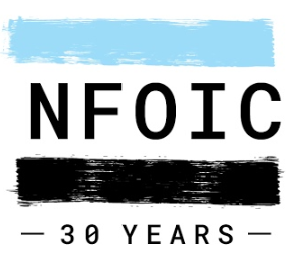Blog Posts
D.C. to Conceal Charter School Details As Comprehensive Facility Modernization Planning Begins
dcogcadmin | April 9, 2018
A frustrated D.C. Council in 2016 ordered a new analysis of school-by-school enrollment, growth plans and needed building upgrades. The dream — to end years of obscure renovation decisions by writing into law the data required, the priorities to rank needs, and plenty of public participation. Results were due in fall 2017 to help with the 2019 budget now being written. A contractor begins public meetings this week to present plans for the long-stalled surveys and analysis, but a major mystery remains: will charter schools get a free pass on the transparency the Council believed essential to objectivity and credibility?
UPDATE 4-24-18: Data on non-DCPS charter facilities will not be public, D.C. officials explained in public meetings after the post below, because the building surveys are being paid for by private foundation money. The Walton Family Foundation, long-time supporters of the charter school movement, is the source. The officials did not comment further on the arrangement and why the nonpublic support was necessary or why it precludes public access to the resulting data. The Coalition is inquiring further with requests for records..
A frustrated D.C. Council in 2016 ordered a new analysis of school-by-school enrollment, growth plans and needed building upgrades. The dream — to end years of obscure renovation decisions by writing into law the data required, the priorities to rank needs, and plenty of public participation. Results were due in fall 2017 to help with the 2019 budget now being written. A contractor begins public meetings this week to present plans for the long-stalled surveys and analysis, but a major mystery remains: will charter schools get a free pass on the transparency the Council believed essential to objectivity and credibility?
The law requires all public schools, DCPS and charter, to provide enrollment now and projected, allow engineers to evaluate facilities and give the public access to the data. Underscoring the seriousness of the work, the Council provided for fines for uncooperative charters (which are not under the D.C. executive branch but have their own oversight body, the Public Charter School Board, appointed by the mayor).
But Jennifer Niles, then Deputy Mayor for Education (DME), told charters in a memo last July that if they did provide details, they would be kept out of public view. Niles promised all school-level enrollment data and also facility evaluations for any non-DCPS building would go only to an outside consultant. The DME, charter board and the public could see only aggregate data.
The memo gave no reason for setting aside the requirements in the law. And when a nonprofit school planning organization, 21st Century School Fund, wrote the mayor with questions about the memo, the reply from Niles did not address them. (Documents linked below.)
DME officials confirmed to the Coalition in January that plans have not changed and there was no new directive since the July memorandum. But whether that is still the case is uncertain, following a change in top leadership as Ahnna Smith took over as interim deputy mayor after Niles left her position in February.
Data were to be collected by last September and followed by public meetings. Parents wrote the chancellor in January asking where was the promised “objective and transparent” planning process; Council Education Committee chair David Grosso wrote the city administrator also in January that it was “not only frustrating but alarming that laws are not being followed and deadlines are not being met.” (Letters linked below.)
A $675,000 consultant to help do the work wasn’t even signed up until late January.
A better process was clearly needed. Over the years, the public grew concerned about cost overruns and obscure priorities in modernization decisions (with basic building needs and ward politics often in conflict). The D.C. Auditor reviewed $1.2 billion in 2010-13 school projects and reported in 2015 such management chaos that it was “difficult, if not impossible, to determine how, when, why, and by whom schools are selected for modernization” and that “the District does not currently provide the public with comprehensive data on both the state of the program and plans for its future.”
After a series of hearings in 2015-16, the Council wrote the new planning statute passed in late 2016. The committee report somberly concluded “the District has spent over $2 billion, completing work at over 70 schools that has no direct link to a citywide education plan. As the school-age population in the District of Columbia continues to grow, it is way past time for a comprehensive, cross-sector long-term plan.”
The Council directed in the law that the plans should embrace all schools and consider schools’ modernization in context of enrollment trends broadly, also that that the public would have a chance to be heard once the survey data and prioritization of needs were made public. But the July DME memo raises questions whether the executive plans to meet those objectives.
This isn’t the first time District charter schools have successfully escaped data requests and more general transparency as “intrusive,” “burdensome” or “not helpful to our schools or parents.” The sector has opposed proposals for school-level open records, open meetings and financial disclosures for board members that are in many states’ charter school laws. (See Coalition testimony supporting increased charter openness here and analysis of the narrow legislation that resulted here.)
But the D.C. Council report on the planning legislation noted many charters, for example, declined to respond to a committee inquiry how special funds for “at risk” students were spent. In that context, it’s understandable the Council wrote into law the mandate to participate in the data-gathering and the fines for refusal.
If the charters do participate but the July memo remains the mayor’s policy, the D.C. charter sector will succeed again in keeping details of their schools under wraps. But the price may be weakened education facilities planning and less-informed school choice by consumers.
